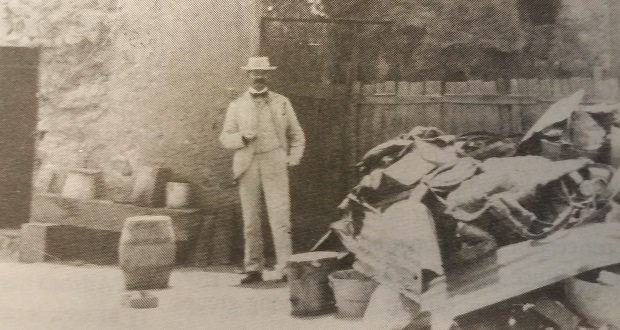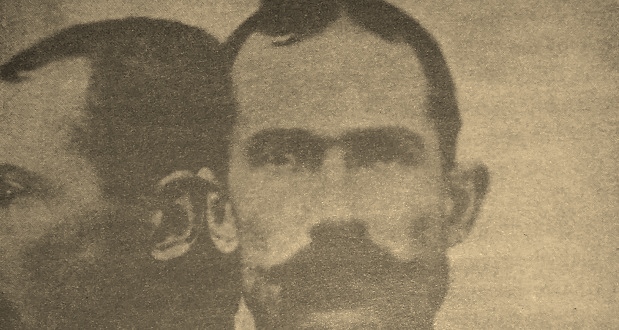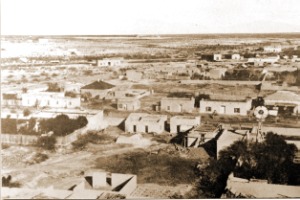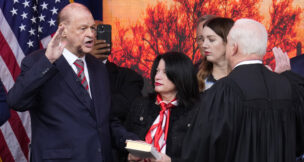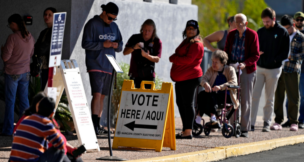Recent Articles from W. Lane Rogers
Builder and First Inmate of the Clifton Jail
This is a photograph of the old Clifton jail, probably taken in about 1900. The identity of the nattily dressed man is unknown, as is the explanation for the rubble piled high in front of the fence. We do know some about the jail, however.
Page, Arizona
In contrast to the typical image of a little red schoolhouse, this one-room school in Page, Arizona, in 1957 was a war surplus troop carrier. (The troop carriers were called “cattle cars” and were pulled by trailer trucks during World War II.) The older woman standing in the doorway is Mary Howe.
Three-Fingered Jack
This is Jack Laustenneau, presumably photographed in 1903 when he became the 2,029th prisoner to pass through the sally port of the Territorial Prison at Yuma.
The Governor’s Race (for the train)
The bald pate and rotund body seen here on the Capitol veranda is that of George W. P. Hunt, photographed on Valentine’s Day, 1912, delivering his inaugural address as the state’s first governor.
Transitioning Tucson
Looking northeast toward the barely visible Santa Catalina Mountains is Tucson in the early 1880s. The photograph, probably taken from the lower steps of Sentinel Peak, shows an evolving Tucson.
Morenci: 1903 Strike
The store pictured here was constructed at Morenci in 1901 by the Detroit Copper Company and known as the DC Store. Its rear wall and basement were fashioned from limestone and the balance of the structure was built with red granite quarried from nearby Morenci Canyon.
‘Edward Jackson’
Little is known of Jackson’s early life. He claimed to have been born in Denver in 1877, but may have been born in San Antonio in 1878. He volunteered for military duty during the Spanish-American War, served in Manila in 1898 and — like many of his contemporaries — returned home with dysentery that would reoccur throughout his life.
Gossip about the Pimas
Inscribed “Pima Buck,” this meticulously posed photograph of a young Pima man was taken in 1894, probably in a Tucson studio. While inherently demeaning, the photo was indicative of the “noble savage” motif then popular among Easterners and others.
Will C. Barnes
Will Croft Barnes is best remembered for his concluding opus, “Arizona Place Names,” a book published in 1935, preceding his death a few months later. The book is still in print, which is a testament to its enduring value to both readers and scholars.
Rations Day at San Carlos
With little else to look forward to, rations day on the San Carlos Apache Reservation was an event. As evidenced by this photo, taken about 1895, men, women and children, on horseback, muleback, and accompanied by their dogs, converged on agency headquarters to receive their weekly allotment.
McKinley’s visit to Congress
At first glance, the portly gentleman with hands clasped behind his back might be taken for an aging schoolmaster scolding errant children at recess. But he was not an educator and the youngsters pictured here were on their best behavior. They were, after all, hobnobbing with a man named William McKinley who was president of the United States.
Old Main: No Running on the Balcony
During the first session of the Arizona Territorial Legislature in 1864 — when not a single public school existed in the newly formed territory — lawmakers authorized a university and wrote a constitution to guide its affairs.

